2-Day Madrid Itinerary: The Perfect Plan for 48 Hours

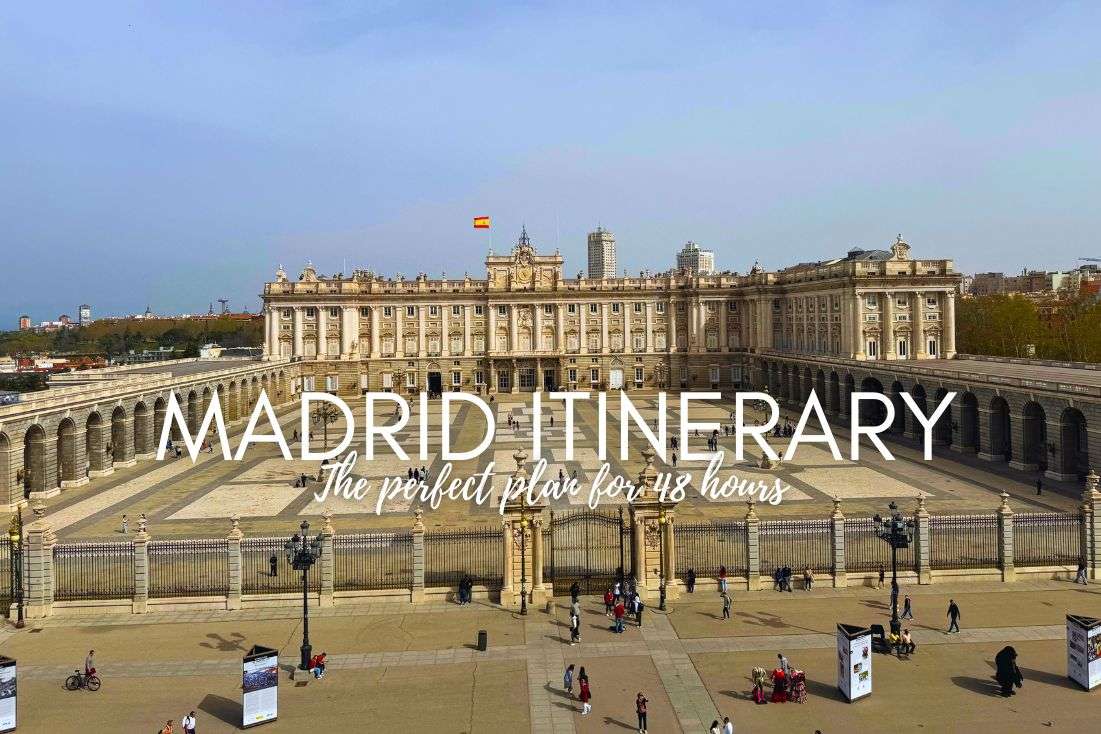
Why just two days in Madrid? Because, honestly, that's all you need. Spend three days, and you might find yourself desperately seeking out the lesser-known spots, wondering why you didn't just hop on a train to somewhere more exciting (which, by the way, you should—there are incredible day trips from Madrid waiting for you to discover them!).
Madrid is a city of contrasts: its restaurants are excellent, its museums world-class, and its architecture… well, let’s just say it's great if you have a thing for boring classical buildings (and if you do, congratulations on being one of the few). But two days is the sweet spot. You’ll leave with a solid impression of the city and zero boredom. Plus, you’ll still have time to check out something cool nearby, like El Escorial, which is half the reason anyone comes to Madrid in the first place (unless you’re into mindless wandering, which is also valid, I guess).
In this article, I’ll give you a detailed step-by-step itinerary for 2 full days in Madrid, complete with prices, opening hours, and practical tips. I’ll tell you which restaurants I think are the best and which hotels you should stay at for an epic visit.
Trip plan for your 2-day Madrid itinerary + map
Get all the places on this itinerary—save my list on Google Maps The hotels I recommend, Hard Rock Hotel and Only YOU Atocha are in the perfect location for sightseeing in Madrid and for day trips by high-speed train
Spend two days in Madrid visiting the highlights in the city and one spot outside of town that you cannot miss:
Day 1:
- Royal Palace
- Almudena Cathedral
- Temple of Debod (optional)
- Prado Museum
- Royal Botanical Garden
- Reina Sofia Museum
- Plaza Mayor
Day 2:
- El Escorial
- Santiago Bernabéu Stadium (Real Madrid) (optional)
- Naval Museum
- Retiro Park
Is Madrid a walkable city?
Yes, Madrid is very walkable, and if the distances are still too much for you, public transportation works very well. The city center is compact, and most of the main attractions are within a short stroll of each other or a quick trip on the subway. You’ll only need your car (or use the high-speed trains) for day trips outside of the city.
Are 2 days in Madrid enough?
Yes, two days in Madrid are enough to hit the main highlights and not get bored. You can cover the major museums, enjoy some great food, and even squeeze in a side trip to El Escorial. I honestly didn’t know what to do with myself on the third day, so I highly recommend getting out of the city.
My top tips for visiting Madrid
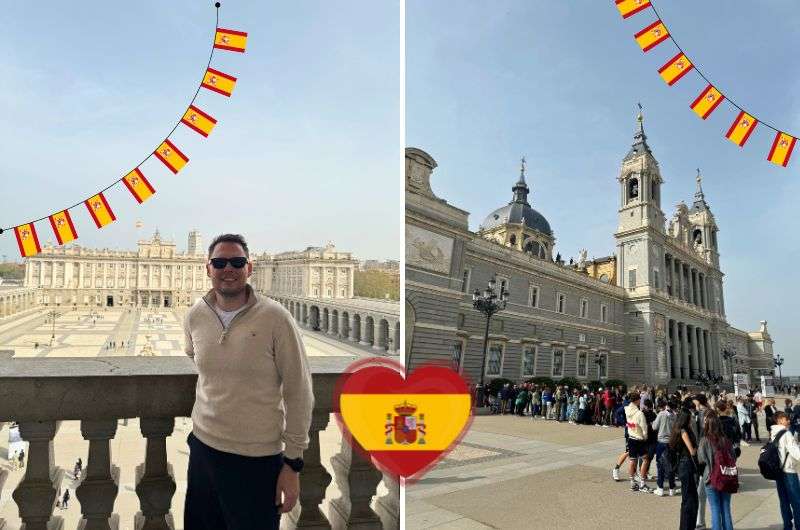
I myself spent 2 days in the Spanish capital and prepared an itinerary
Armed with these tips, you’re be ready to conquer Madrid in two days flat. Just remember, this city is a sprint, not a marathon. After 2 days, you’ll do yourself a favor if you move on to some of the very worthwhile day trips from Madrid.
- Get around like a local—minus the crowds: Madrid’s public transport is surprisingly bearable, even for someone who avoids it like the plague (me). The metro is efficient, uncrowded, and straightforward. Grab a 10-journey card; it's cheap, and you can share it. But if you prefer avoiding the metro's choppy boat-like rides, taxis are a solid choice.
- Skip the royal waiting game: The Royal Palace is grand, but the lines are even grander. Book your tickets online if you’re set on going inside—we ended up giving up.
- Art lovers, rejoice: The Prado is where Madrid really shines. If you’re into art, this place is like Disneyland—except without the screaming kids. Be prepared to spend a couple of hours marveling at the masters. Afterward, the Reina Sofia is a must for modern art fans. But a word of caution: modern art is a bit like Marmite—either you’ll love it, or you’ll walk away wondering what just happened.
- Don’t sleep on El Escorial: If there’s one day trip worth making from Madrid, it’s to El Escorial. This massive palace-monastery-mausoleum combo is like Spain’s answer to Versailles, but without the hordes of tourists. You can even hike up to the Silla de Felipe, where you’ll get a killer view and feel just a little bit like a king overseeing his domain.
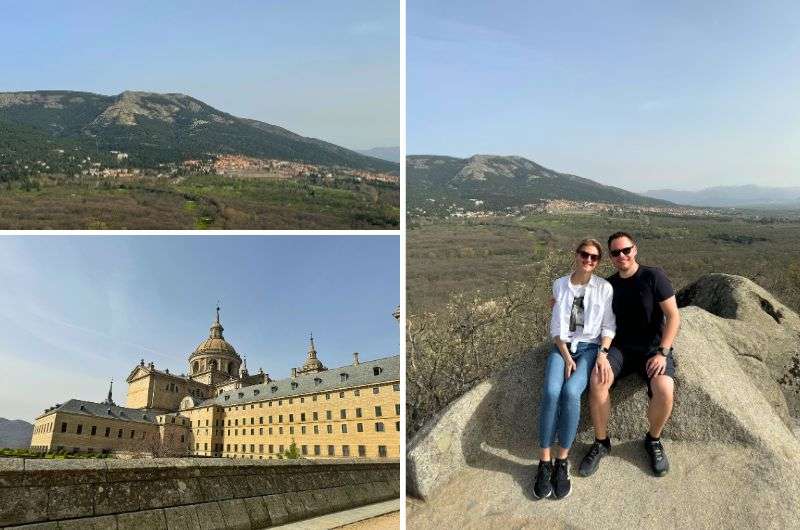
A day trip to El Escorial—the palace and viewpoint
- Plaza Mayor: Meh, but necessary: Yes, you have to go to Plaza Mayor because, well, everyone does. But don’t expect to be wowed. It’s a nice square, nothing more, nothing less. My favorite part was the bear statue.
- Real Madrid? Real close, but skip it: Santiago Bernabéu Stadium is smack in the middle of the city, but unless you’re a die-hard football fan maybe take a selfie outside and move on. Save your EUR 35 for something more exciting—like churros.
- The Temple of Debod—a misplaced Egyptian gem: This ancient Egyptian temple is plonked down in the middle of Madrid, and while it’s interesting, it’s also a bit underwhelming. If you’re in the area, sure, take a look. But don’t make a special trip just for this.
- Dining in Madrid—eat like a king: The food in Madrid is stellar, so don’t waste your meals on tourist traps. Seek out the local joints, where the tapas flow like wine, and the wine flows even better. Eat everything—from the classic jamón ibérico to churros dipped in chocolate. It’s all good.
And now, your detailed Madrid itinerary:
Day 1 of Madrid 2-day itinerary
Get the route of day 1 in Madrid already mapped out on Google Maps
Main sites visited on day 1: Royal Palace, Almudena Cathedral, Temple of Debod, Prado Museum, Royal Botanical Garden, Reina Sofia Museum, Plaza Mayor
Restaurant tips: Restaurante Amicis | Restaurante-Coctelería Inclán Brutal Bar
Hotel recommendations: Hard Rock Hotel | Only YOU Hotel Atocha (ideally located close to Atocha train station, the one with the high-speed trains you’ll want to take day trips with!)
Further reading: Best museums in Spain | Spain background | Nightlife in Spain
Day 1, Stop 1: Palazzo Real aka the Royal Palace| Entry fee: EUR 14 for self-guided tour, Opening hours: Monday to Saturday 10 am–7 pm, Sundays 10 am–4 pm
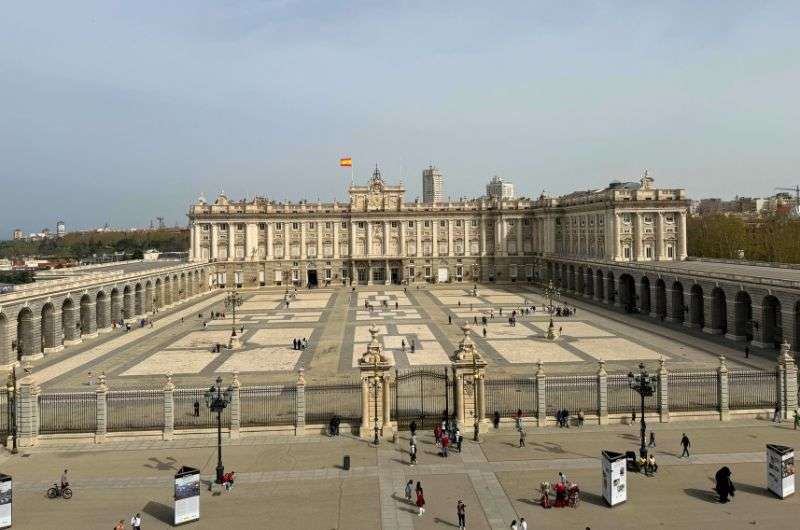
The Royal Palace of Madrid
- Time spent here: 1–2 hours for a tour, 10 minutes if you’re just staring from the outside
- Opening hours: Monday to Saturday 10 am–7 pm, Sundays 10 am–4 pm
- Price: EUR 14 for a self-guided tour, EUR 20 for a guided tour
- Official website: Royal Palace of Madrid website
First day in Madrid, first stop… don’t let it be a letdown like it was for me. Why? Well, I made it to the Royal Palace, took one look at the line at the ticket desk and decided it wasn’t worth my time. I snapped a selfie, admired the palace from the outside, and called it a day.
The building itself is impressive, sure, but nothing too exciting. It reminded me a little of the Buckingham Palace in London… just twice as big. I’m sure it’s a beautiful Baroque palace, but the thought of spending an hour in line just to get inside? Hard pass. Book your tickets online in advance to avoid the epic queues. Otherwise, you might spend more time waiting than actually exploring.
Tip: If you happen to be here on a Wednesday or Saturday from 11 am–2 pm, between June 19 and September 18, you can catch the Changing of the Guard ceremony. Every 30 minutes, you’ll see the sentries on foot switching positions, and every hour, the guards on horseback do the same.
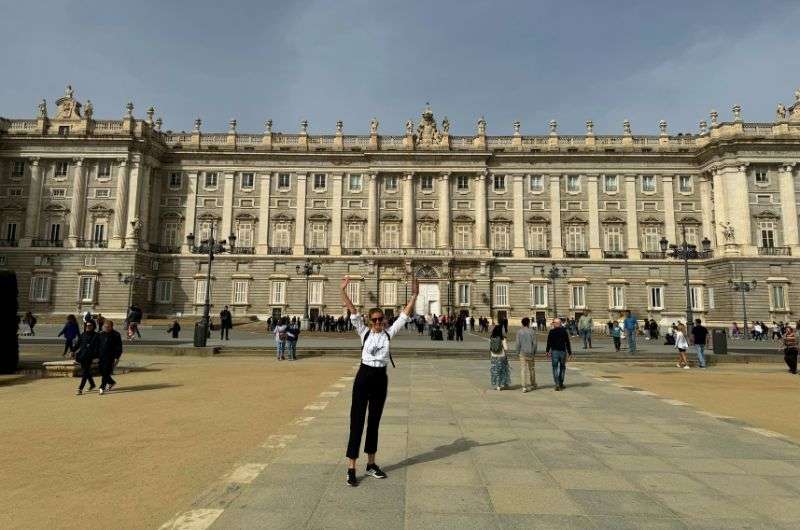
¡Hola! from The Royal Palace
But if you’re more patient (or just really into palaces), here’s what you need to know: The Royal Palace is the largest functioning royal palace in the world (by floor space, at least) with a whopping 135,000 square meters (or 1.45 million square feet) of floor space and 3,418 rooms. To put that into perspective, that’s about 50 football fields worth of palace. But don’t get too excited—you’ll only see about 20 rooms and a few hallways on the standard tour.
What’s inside
- Crowd flow: Once you’re inside the Palazzo Real, the crowd moves swiftly from room to room, but yes there are crowds. From what I’ve heard, it isn’t unpleasant once inside. Maybe there’s something about being surrounded by royal opulence that makes everyone a little more polite!
- Highlights: The Royal Armory is a real standout—if you’re into medieval weaponry, this will be your jam. I’m gutted I missed it! Another must-see is the Crown Room. Notice the hole in the ceiling? That’s not a design flaw—it’s a symbolic touch, representing the king’s authority coming directly from the heavens. Remember, while the palace has over 3,000 rooms, you’ll only get to peek into a fraction of them.
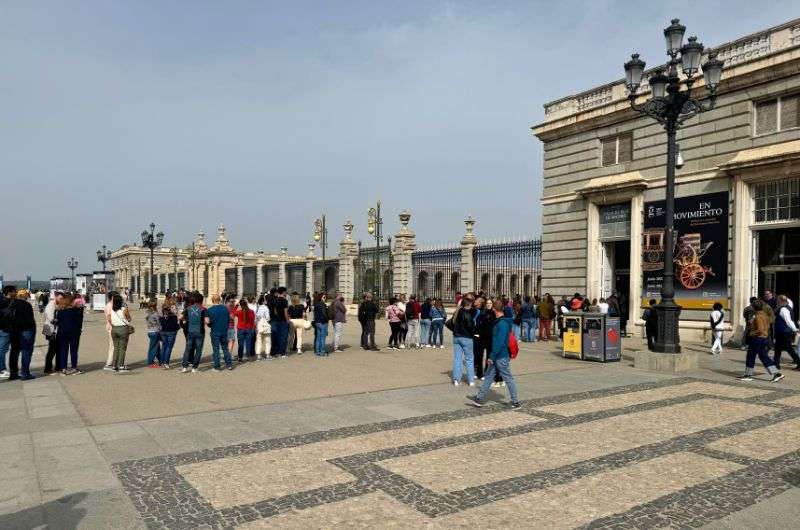
If you want to skip this long line, book your tickets online in advance
- Kitchen tour: If you’re feeling extra curious, you can pay a bit more for the kitchen tour, but fair warning—some folks have said it feels rushed. Then again, the kitchens are sometimes a surprising highlight (like that time I visited Topkapi Palace in Istanbul), because it gives you a glimpse into the behind-the-scenes of royal life
- Chandelier envy: The chandelier collection here is next-level. These aren’t your grandma’s chandeliers; these are massive, glittering works of art that light up the already grandiose rooms in the most extravagant way possible. I’m more into minimalism, but kings tend to disagree with me on interior design.
In the end, whether you choose to marvel at the palace from the outside or brave the lines to explore its luxurious interiors, the Royal Palace is a must-see, even if it’s just for a quick selfie.
Day 1, Stop 2: Almudena Cathedral| Entry fee: EUR 7, Opening hours: Monday to Saturday 10 am–2:30 pm, closed Sundays
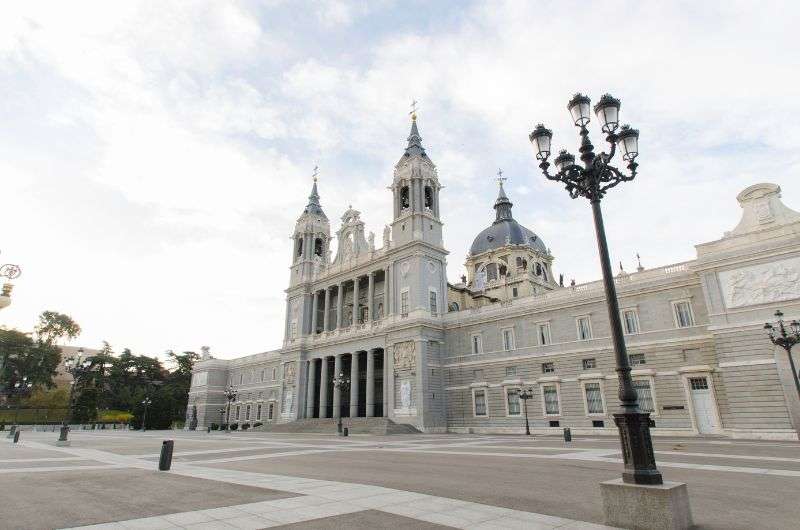
Almudena Cathedral
- Distance from last stop: Just a few steps
- Time spent here: 30 minutes
- Opening hours: Monday to Saturday 10 am–2:30 pm, closed Sundays
- Price: EUR 7 (with audio guide on your phone)
- Official website: Almudena Cathedral website
Right next to the Royal Palace is the Almudena Cathedral, a relatively modern addition to Madrid’s skyline. Now, I’d seen a lot of cathedrals during my trip to Madrid and the surrounding historical towns (Segovia? Toledo? Ávila?), so by the time I got here, I was definitely feeling a bit over-cathedral’d. But this one is a little different—it’s neogothic, not just gothic, which gives it a unique vibe. For EUR 7, you can explore the interior, which is worth it just to see how they’ve mixed old and new styles. There’s an audio guide you get on your own phone, one that actually works pretty well compared to other places they’ve offered this.
What really stood out to me was the view. You can climb up to the dome (or take the elevator if you’re not into stairs aka need to work on your fitness level) and get a great view of the Royal Palace and the surrounding area. It’s a bit of a hike, but the balconies with their raised glass panels make it worth the effort. Note that the viewpoints are closed during the Changing of the Guards at the palace next door.
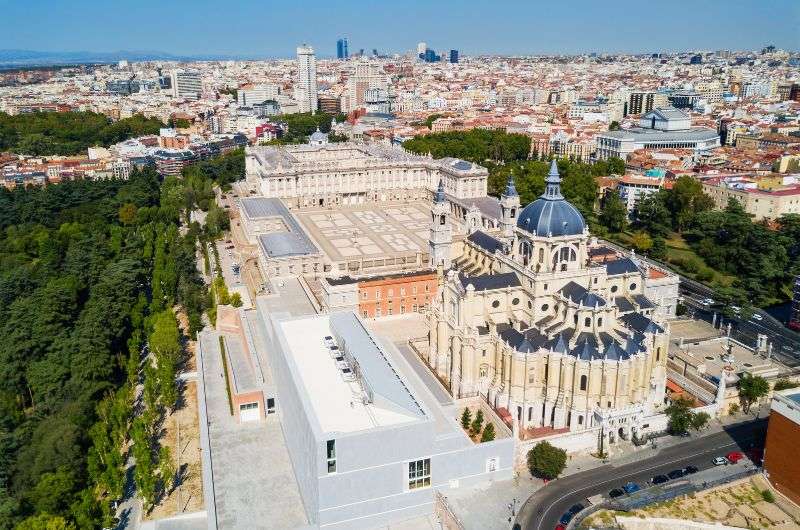
From Almudena Cathedral you can see a beautiful view of The Royal Palace and the rest of Madrid
Inside, the cathedral has some cool modern touches, like the colorful mosaics that break up the otherwise traditional design. But let’s be real—what I liked most was the chance to finally take a break from all the walking. And yes, you’ll see everyone ignoring the no-photo rule, which drives me nuts. Just because everyone else is doing it doesn’t mean you should too.
Fun fact: You can donate the recommended EUR 1 via card here—they’re keeping up with the times! Also, if you’re into Spanish royal history, the crypt below is where you’ll find the resting places of several members of the royal family.
Time for a coffee break?
If you’re in serious need of a caffeine fix, make a beeline for FOUR Madrid Specialty Coffee. It’s just a couple of blocks from the Royal Palace and Cathedral, and they serve coffee that actually tastes like coffee and not like it was brewed in a muddy puddle. Before you head into Madrid’s most famous art museum and spend hours trying to understand artists’ minds, you’ll appreciate a quality cup.
Day 1, optional stop: Temple of Debod | Entry fee: Free, Opening hours: Tuesday to Sunday 10 am–7 pm, closed Mondays
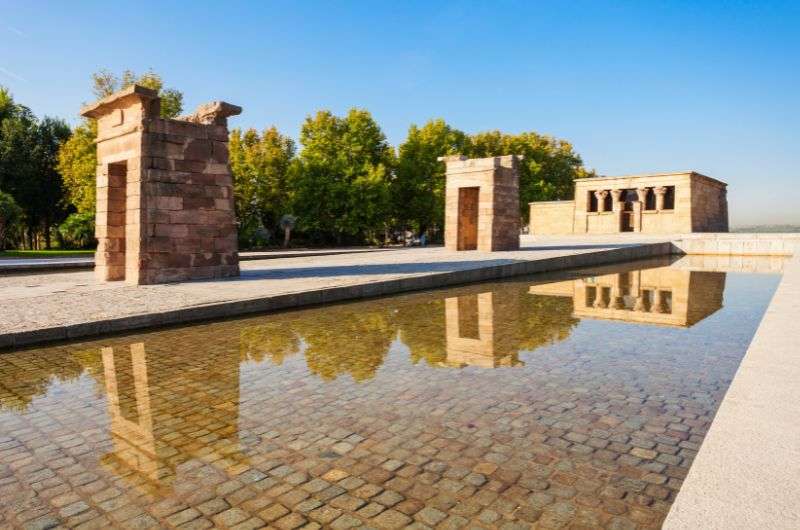
Temple of Debod
- Time spent here: 30 minutes tops
- Opening hours: Tuesday to Sunday 10 am–7 pm, closed Mondays
- Price: Free
Debod is an interesting quick stop if you’re nearby or into ancient history, but it’s not something you need to go out of your way to see. If you’ve got some extra time and want to experience a bit of ancient Egypt in Madrid, it’s a pleasant diversion. Otherwise, you’re not missing much if you skip it.
The Temple of Debod is an ancient Egyptian temple that somehow ended up in the middle of Madrid. Originally built in the 2nd century BCE, it was gifted to Spain by the Egyptian government in 1968 as a thank-you for helping save historic sites from the rising waters of the Aswan Dam.
The temple was originally located near the Nile River, dedicated to the gods Amun and Isis. When the Aswan Dam threatened to submerge it, Spain stepped in to help save several monuments, earning them this impressive thank-you gift.
It’s pretty surreal to see such an old piece of history in a modern park, but if you’re expecting a massive monument, you might be a little underwhelmed. The story of its transport adds to the cool factor though.
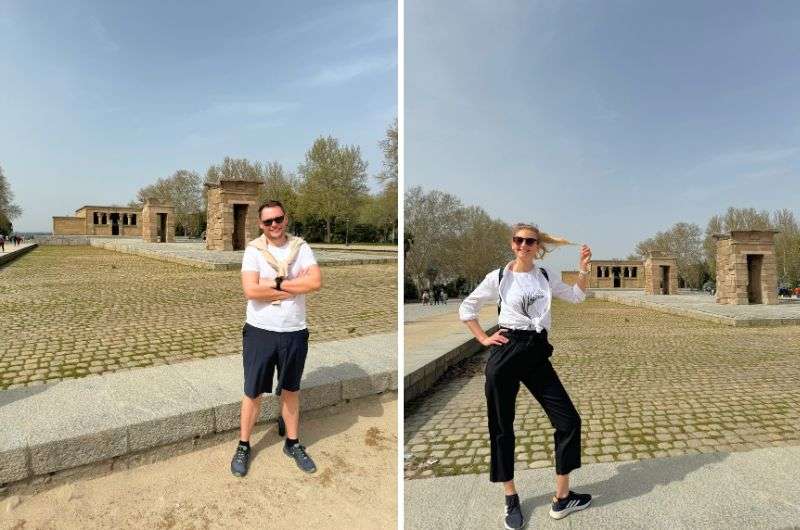
Temple of Debod is not a must see but nice to see
How did it get to Madrid? The stones of the Temple of Debod were carefully dismantled in Egypt and transported first down the Nile on barges, and then to Valencia in Spain by freighter. Ninety trucks then carried 1,350 boxes of ancient stones from Valencia to their new home in Madrid’s Parque del Oeste, right next to the Royal Palace’s gardens.
While it’s not the biggest temple out there (seriously, it’s small), it’s still a fascinating piece of history, and seeing it around sunset can be pretty magical. You can see everything inside and out in about 30 minutes.
Day 1, Stop 3: Prado Museum | Entry fee: EUR 15, opening hours: Monday to Saturday 10 am–8 pm, Sundays 10 am–7pm
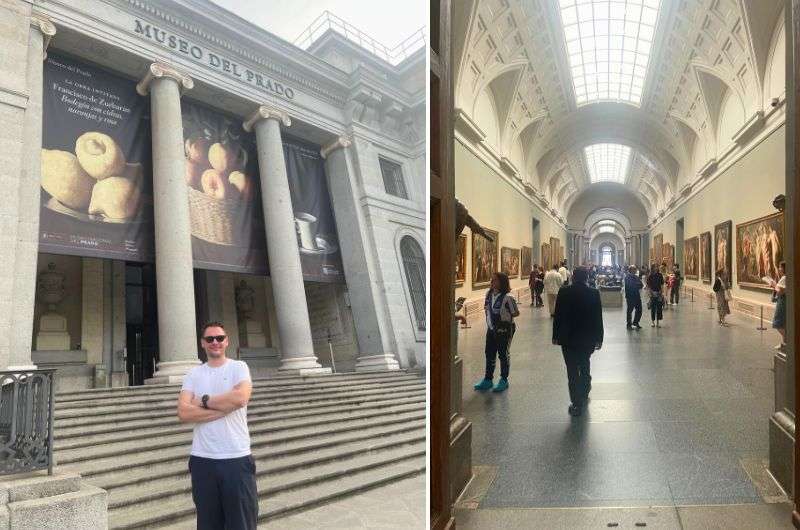
Ready to spend hours at Museo del Prado!
- Distance from last stop: 2.1 km (1.3 mi), a 30-minute walk or take the metro
- Time spent here: 2 hours minimum
- Opening hours: Monday to Saturday 10 am–8 pm, Sundays 10 am–7pm
- Price: EUR 15
- Official website: Prado Museum website
Next, you’ll want to hop on public transportation to get to the Prado efficiently; there’s no time to waste! The Prado is one of the world's most famous art collections, and it's the place where Madrid really shows off. And it’s massive! It’s packed with masterpieces that even someone who usually skims through art museums will appreciate.
What to expect at the Prado
If you’re smart, you’ve pre-booked your tickets online, so you can stroll right in while others wait in line for tickets like chumps.
The Prado is massive, and it’s easy to get overwhelmed. Grab a map at the entrance and focus on the big names. If you try to see everything, you’ll either go insane or grow a beard in the process. Prado is aware of it’s own hugeness and has a 2-hour itinerary mapped out for you (and a 1-hour version if you’re a complete art-phobe). I appreciated the English signage, making it a tad easier to find your footing and know what you’re looking at.

Example of a painting with a religious theme... I think
The Prado kicks off with a lot of 15th-century religious art, which quickly felt like overkill after all the cathedrals I'd already seen by then on our road trip around Castile and La Mancha. But then you hit Tizian, and wow, that’s when things get interesting. When you see Caravaggio’s David with the Head of Goliath—brutal, beautiful, and kind of terrifying—you’ll be glad there’s a room full of paintings of food right after it to help you decompress. You’ll get hungry just looking at them but push through because there’s still a lot more to see, and it’s worth every minute.
Tip: After an hour or so, you might start experiencing “art fatigue.” That’s the moment when every painting starts blending together, and your brain screams for a break. Fight the urge to rush through by taking a moment to sit and absorb what you've seen. There are cafes in the Prado full of tired tourists just like you.
As you move through the museum, you’ll notice a wild difference in quality between the painters—some are absolute geniuses, while others... well, let’s just say they fill up the space. Velázquez, though, he’s in a league of his own. Las Meninas alone is worth the visit, but his other works are just as impressive. And then there’s Goya, who takes you on a rollercoaster from heroic battles to the darkest, most depressing corners of the human mind. His room might leave you feeling a bit shaken, but that’s what makes it unforgettable.

More Prado paintings
By the time you get to Bosch’s The Garden of Earthly Delights, you’ll either be fully immersed or questioning your sanity. It’s like a medieval acid trip—pure madness on canvas. And don’t skip Raphael’s Cardinal or Dürer’s self-portrait—they’re like a breath of fresh air after the heavy medieval stuff downstairs.
The Prado is massive, so unless you’re planning to move in, focus on the big names and take your time. And remember, no photos allowed. After a couple of hours, you’ll have walked a good 5–6 km, so you’ll definitely have earned a break and maybe a glass of wine (beer for me) to process everything you’ve just seen.
Don’t-miss masterpieces:
- Las Meninas by Velázquez: This is the Mona Lisa of the Prado. It’s a portrait, but also a behind-the-scenes peek into the Spanish royal court. The painting is famous for its complex perspective and the way Velázquez managed to paint himself into the scene—like the original photo-bomber. Velázquez’s works stand out not just for their technical skill, but because there’s an undeniable quality difference between his paintings and many others in the museum. Honestly, Picasso doesn’t offend me, but when you see his work next to Velázquez, it’s a different league.
- The Third of May 1808 by Goya: A powerful anti-war painting that shows the brutal reality of the Napoleonic Wars. Goya wasn’t afraid to show the horror, and you can feel the fear and chaos jump off the canvas. If you’re into dramatic history, this one’s for you. Goya’s room is also home to his darker, more nightmarish works—like stepping into a hyper-depressing horror movie. Not a light visit, but definitely unforgettable.
- David with the Head of Goliath by Caravaggio: This is one of the most brutal and beautiful pieces in the Prado. David is holding the freshly chopped head of Goliath, and if you look closely, you’ll notice that Caravaggio used his own face for Goliath. Talk about commitment to the craft! It’s both gorgeously painted and delightfully gruesome.
- The Garden of Earthly Delights by Hieronymus Bosch: This triptych is as bizarre as it is fascinating. It's like looking at the fever dream of a medieval mind—a mix of paradise, earthly pleasures, and hellish scenes all in one. Think of it as the world’s weirdest “Where’s Waldo” puzzle, with tiny, surreal details hidden in every corner. It’s nearly impossible to skip Bosch’s most famous work, The Seven Deadly Sins, so make sure to swing by and appreciate the intricate and often disturbing details.

The Garden of Earthly Delights by Hieronymus Bosch
- Cardinal by Raphael: One of the highlights of the Renaissance section. Raphael’s work here is a masterclass in capturing the subtleties of human expression, and it’s a stark contrast to the more rigid medieval pieces you’ll find on the ground floor.
- Self-Portrait by Dürer: Another must-see, this self-portrait is a prime example of how artists began to view themselves as important subjects in their own right during the Renaissance. Dürer’s confident gaze and meticulous detail make it clear that this guy knew he was a big deal.
Fun fact: The Prado's collection is valued at over EUR 10 billion. That’s a lot of zeroes, and it makes you realize why security is so tight. The museum started as a royal collection, and today it’s Spain's pride and joy, with more than 8,000 paintings in its vaults (only about 1,500 are on display, but that’s more than enough).
After about two hours, you’ll probably hit your limit, which is perfect timing to move on. You've seen enough to have your mind blown without burning out. Now, go get some fresh air.
Day 1, Stop 4: Royal Botanical Garden | Entry fee: EUR 4, Opening hours: Daily 10 am–9 pm
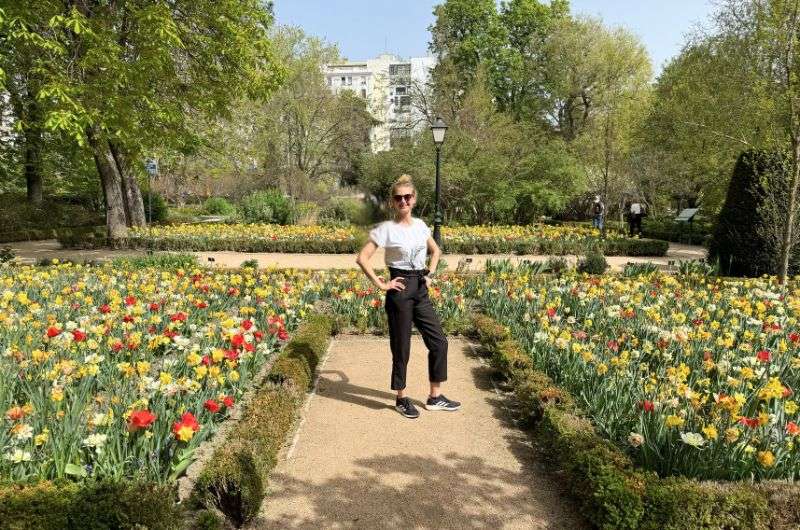
So many beautiful flowers, the prettiest is still the one in the middle
- Distance from last stop: Right next door to the Prado
- Time spent here: 1 hour max
- Opening hours: Daily 10 am–9 pm (closes earlier in months other than May–August)
- Price: EUR 4
Now it’s time to give your brain a bit of a breather. Luckily, the Royal Botanical Garden is just a few steps away from the Prado. You’ll be back in museums shortly, so enjoy the great outdoors while you can. The garden isn’t massive, but that’s part of its charm—you can wander through in less than an hour, taking in everything from desert plants to lush jungle-like greenery. My favorite were the palm tree and the rain forest area.
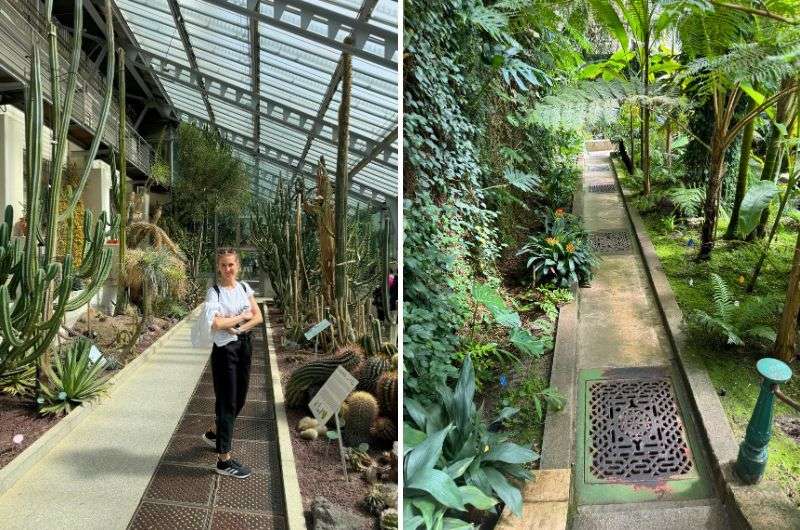
See different types of plants in the Madrid Botanical Garden
This place is perfect for post-Prado stroll, especially if you’re starting to feel a bit overwhelmed by all the art and history. And not just because you’ll be looking at more art in a bit. It’s laid out in neat, easy-to-navigate sections, so even if you’re not a hardcore plant enthusiast, it’s still a pleasant way to spend some time. So take your time, enjoy the fresh air, and recharge before heading to Reina Sofia.
Day 1, Stop 5: Reina Sofia Museum | Entry fee: EUR 12, Opening hours: Monday + Wednesday–Saturday 10 am–9 pm, closed Tuesdays, Sundays 10 am–2:30 pm
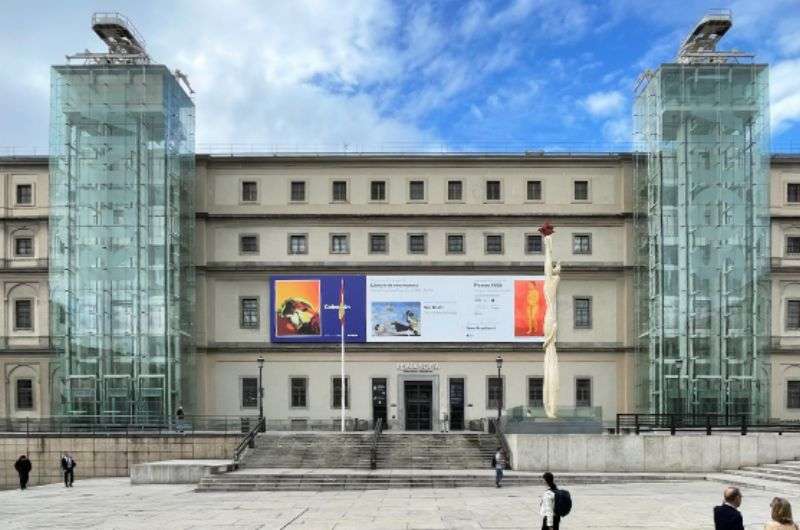
- Distance from last stop: 250 m (0.2 mi), a 3-minute walk
- Time spent here: 1 hour
- Opening hours: Monday + Wednesday–Saturday 10 am–9 pm, closed Tuesdays, Sundays 10 am–2:30 pm
- Price: EUR 12 or EUR 16.50 with audio guide
- Official website: Reina Sofia Museum website
Next up on your Madrid itinerary—more art! Hey, it’s what Madrid does best. But this time, with a modern twist at the Reina Sofia Museum. If the Prado was all about classic masterpieces, the Reina Sofia is where things get weird. This museum is home to some of the 20th century’s most famous works, including Picasso’s Guernica, which is practically a pilgrimage site for art lovers.
Tip: If you’re here on a Sunday between 12:30 and 2:30 pm, you’re in luck—it’s free. Or, if it’s a Tuesday, you are very unlucky, because that’s the museum’s closing day. Otherwise, it’s EUR 12 per person without the audio guide, which I think is still a steal considering what’s inside.
What to expect at the Reina Sofia Museum
The Reina Sofia is the kind of place where you’ll either be blown away by the genius on display or left scratching your head at what qualifies as art these days.

The uber-famous Guernica by Pablo Picasso
Obviously, the main attraction here is Picasso’s Guernica. This is one of those paintings that you’ve heard about a million times, but seeing it in person is a whole different experience. It’s massive, chaotic, and hits you with a wave of emotion. Picasso painted it in response to the bombing of Guernica during the Spanish Civil War, and it’s one of the most powerful anti-war statements ever created. Standing in front of it, I felt like I was being punched in the gut by history.
I found the sections on fascist and communist art particularly interesting, especially seeing how cubism influenced the propaganda of both sides. It’s not something you see every day, and it adds a whole new layer to the art (especially for history buffs like me).
Then there’s Dalí. His work is scattered throughout the museum, and while his style is closer to what I enjoy, the guy was a bit of a jerk, so I’m always torn. Still, you can’t deny his talent. His surreal, often disturbing pieces make you stop and think—or just stare in confusion. That’s the fun of it, I guess.
My thoughts
Modern art can be a bit much sometimes. A lot of it feels like the artists were working through some serious issues—there’s a ton of emo energy—there’s a lot of “my life is terrible, and here’s a painting about it” going on.

You can tell I was having a bit of an existential crisis with all the crazy art all around me...
And then there’s the unresolved sexual tension in a lot of these paintings. It’s like they had a bad breakup 20 years ago and never quite got over it. But hey, that’s what makes it interesting. My personal approach to modern art is pretty simple: I either like it or I don’t. There’s no right answer, obviously, so just go with what speaks to you. Maybe you won’t agree with me and that’s ok (but I’m right).
One downside is the lack of English descriptions. Compared to the Prado, there’s not much help in understanding what you’re looking at, which can be frustrating. The museum is huge, but honestly, most of it is temporary exhibits that you can breeze through without feeling like you’re missing much. An hour, maybe an hour and a half if you’re really into it, is enough to see the highlights.
Plus, it’s almost time for dinner, isn’t it? You’re also conveniently very close to your hotel if you’re staying at either the Hard Rock Hotel or Only YOU Hotel Atocha—both super cool, good quality hotels. All you need to do is choose which style suits you better. Go freshen up and head out to enjoy some of Madrid’s incredible restaurants.
Day 1, Stop 6: Dinner time and Plaza Mayor
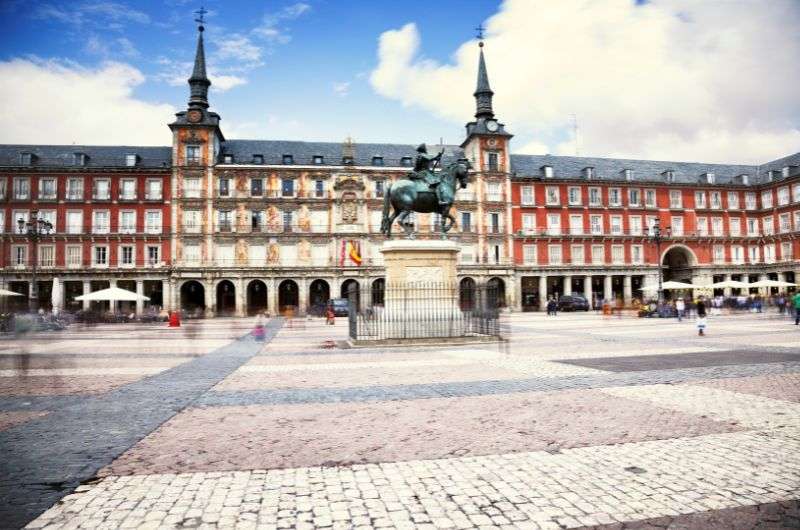
Plaza Mayor de Madrid... just a big square
- Distance from last stop: 1.5 km (0.9 mi), a 20-minute walk
- Time spent here: 1 hour
Lastly, head to Plaza Mayor, Madrid's main square and a classic stop for anyone passing through the city. It’s one of those places you have to see just because everyone else does, but don’t expect to be blown away.
Honestly, it’s a nice enough square, but after all the hype, it’s more “meh” than “wow.” If you’re feeling the need to do something touristy, snap a quick photo with the famous bear and strawberry tree statue, and then head on over for dinner.
Two restaurants that are nearby and are delicious and with good service are:
- Restaurante Amicis: Meat, fish, burgers, and chill vibes in a cool interior. On a pedestrian street with outdoor seating.
- Restaurante-Coctelería Inclán Brutal Bar: How over-the-top can you go?! With amazing food and great service, the sky is the limit! This place is anything but basic. Sauce in a syringe, anyone?
Read up on nightlife in Spain so you know what to expect. If you’re used to eating dinner at 7 pm, you may be surprised—many restaurants don’t even open until at least 8 pm!
Day 2 of Madrid 2-day itinerary
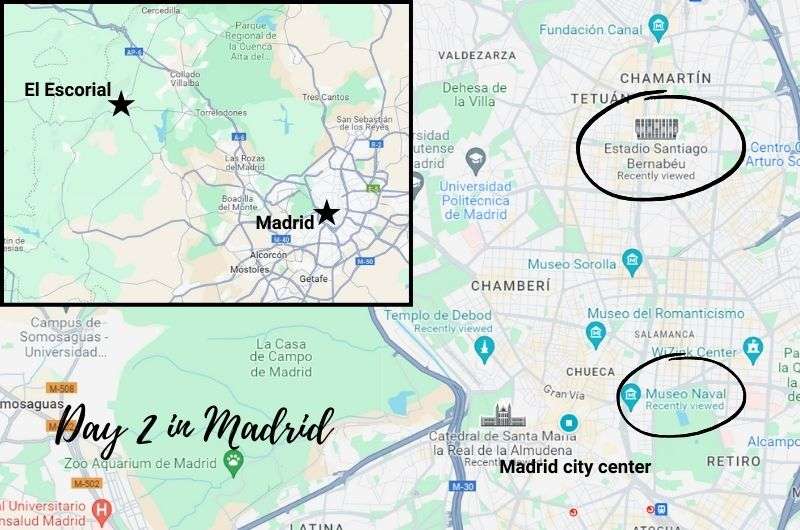
Today, you’ll start off with a trip outside of the city before finishing up your trip in Madrid’s city center
Main sites visited on day 2: El Escorial, Santiago Bernabéu Stadium (Real Madrid), Naval Museum, Retiro Park
Restaurant tips: Tasca Barea | Vinitus Gran Via Madrid
Hotel recommendations: Hard Rock Hotel | Only YOU Hotel Atocha
Further reading: Best day trips from Madrid | Understanding Spanish football
Day 2, Stop 1: El Escorial | Entry fee: EUR 14, Opening hours: Tuesday to Sunday 10 am–7 pm, closed Mondays
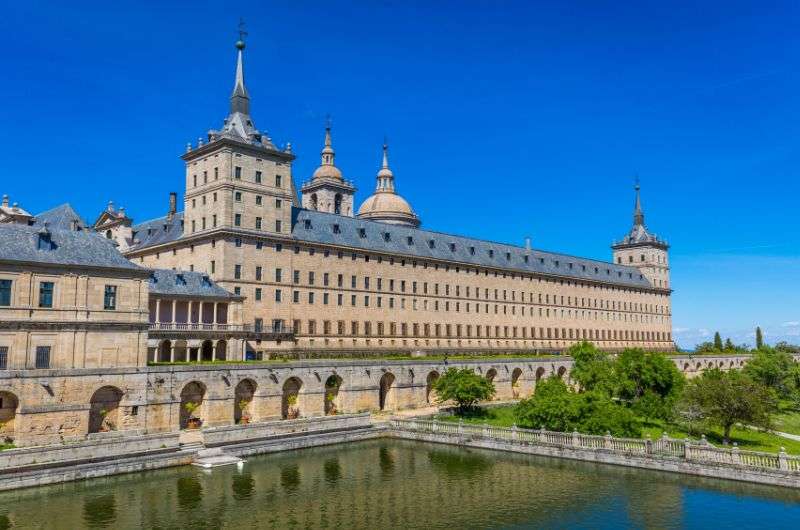
El Escorial
- Distance from Madrid: 1 hour by train or car
- Time spent here: 2–3 hours
- Opening hours: Tuesday to Sunday 10 am–7 pm, closed Mondays
- Price: EUR 14 + EUR 5 for audio guide, or EUR 20 for a guided tour
- Official website: El Escorial website
Start your second day in Madrid with a little half-day trip outside of the city. But the destination is anything but little—it’s the grandest thing I’ve ever seen! Think of it as Spain’s answer to Versailles. I haven’t made it to Versailles yet, so for me, El Escorial is the biggest, most impressive palace I’ve laid eyes on. The basilica alone took me 20 minutes to get through, and that was with me moving at a decent pace. And if you’re anything like me, you’ll leave with a newfound (or newly boosted) appreciation for the Habsburgs, the power they wielded, and the legacy they left behind.
El Escorial is a grand historical complex located in the foothills of the Sierra de Guadarrama, just outside Madrid to the east. It was built in the 16th century by King Philip II and serves as a royal palace, monastery, and mausoleum. When you walk in, you’re hit with this incredible contrast—on the outside, it’s all austere and minimalist, but inside, it’s a different story altogether, just the way I like it. El Escorial was both a royal residence and a religious center, reflecting Philip II's deep Catholic faith and his influence over Spain's empire.
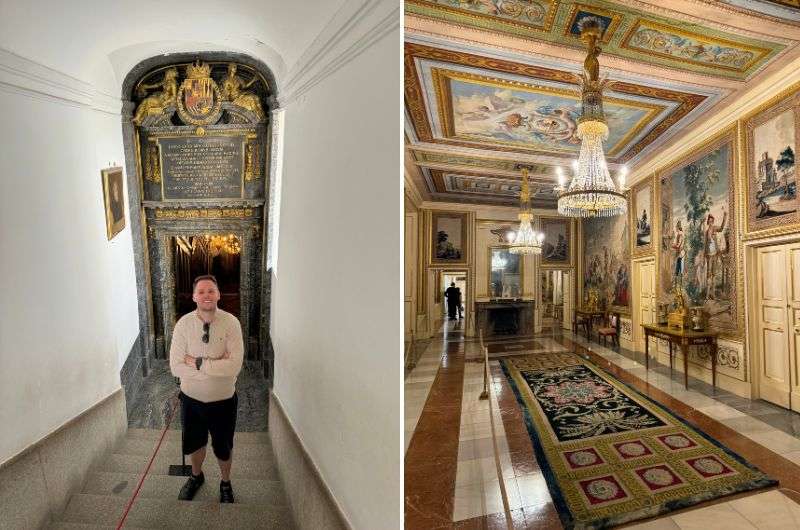
The interiors of El Escorial
Getting there
Coming from Madrid, especially when choosing a hotel near Atocha train station, you’ve got a couple of options (both of my recommended hotels are right there: Hard Rock Hotel | Only YOU Hotel Atocha). Driving will get you there in about an hour, with easy parking available.
If you prefer public transport, take a train from either Madrid Atocha Station or Madrid Chamartín Station. It’s also about an hour, and the train station in El Escorial is conveniently located in the town of San Lorenzo de El Escorial, just a 15- to 20-minute walk uphill to the palace. It’s a pleasant walk through the town, past cafes and shops, but if you’re not in the mood for a hike, taxis are waiting at the station.
Try to be there for the 10 am opening time so you still have time afterwards for the few stops you have left to explore in Madrid.
Tickets and practical tips
Tickets to El Escorial can be bought online or on the spot for EUR 14, an audio guide costs EUR 5 extra. If you want to take it easy and let someone else do the talking, there’s a guided tour option for EUR 20, lasting about 2 hours. I’d go for the tour if you can fully appreciate the historical and architectural significance of El Escorial.
We were there in April and it was smooth sailing and no lines. If you’re visiting during the busy season, it’s worth booking ahead.

Don’t forget to bring your sweater into the basilica!
Pro tip: Bring a sweater. The basilica is so cold, it could double as a fridge. Trust me, you’ll thank me later when you’re not shivering through your tour.
Silla de Felipe detour: A king’s view
Before diving into the palace itself, you might want to take a little detour to the Silla de Felipe. This was where King Philip II would sit to oversee the construction of his grand masterpiece. The view from up there is stunning—you can see El Escorial laid out beneath you like a tiny model, reminding you of just how powerful Philip was, ruling over a fifth of the world at the time. Mad respect! The hike to Silla de Felipe is about 2 km (1.2 mi) uphill through a beautiful forest, so if you’re up for it, it’s well worth the effort. Just know that on photos, El Escorial might look a bit small due to the distance, but in person, the view is breathtaking.
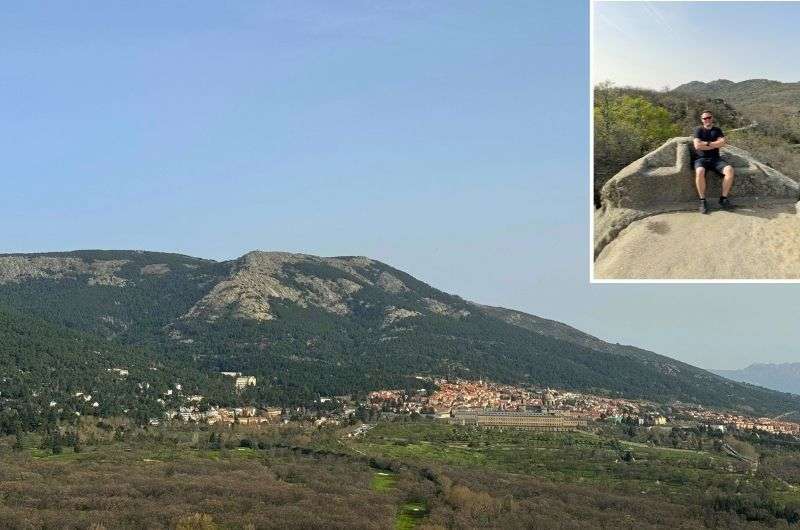
The epic view from Silla de Felipe
What’s inside El Escorial
- The Basilica: This place is epic in every sense of the word. The basilica’s sheer size is overwhelming. The altar is massive, covered in golden statues, and the ceilings—just wow. Don’t forget to look up, because the ceilings here are something else. I’d suggest spending a good 20 minutes just soaking it all in.
- Pantheon of the Kings and Pantheon of the Princes: Sure, it’s basically a cemetery, but it’s one of the most beautiful ones you’ll ever see. The entire Spanish dynasty rests here, from Charles V to Philip II. The coffins are incredibly ornate, making this place both morbid and beautiful. Honestly, if I had to pick a mausoleum, this one would do just fine.
- Habsburg Palace: The Habsburg Palace is classic Renaissance, but don’t expect too much in terms of furnishings. Philip II was known for his ascetic lifestyle, so it’s a bit sparse. But even with minimal furniture, the doors alone are so intricately decorated, I’m sure back in the day you could buy a whole house for the cost of just one of those doors. One of my favorite parts was the detailed genealogies of the royal families connected to Spain, which totally feeds my OCD tendencies.
- Hall of Battles: Now, this room is easily one of the most interesting in the entire complex. The walls are covered in murals depicting historical battles, all seamlessly connected in one grand narrative. It’s beautiful and one of my favorite parts of the visit. Unlike some places I’ve been to recently (looking at you, Japan), there’s actually a lot to see inside El Escorial.
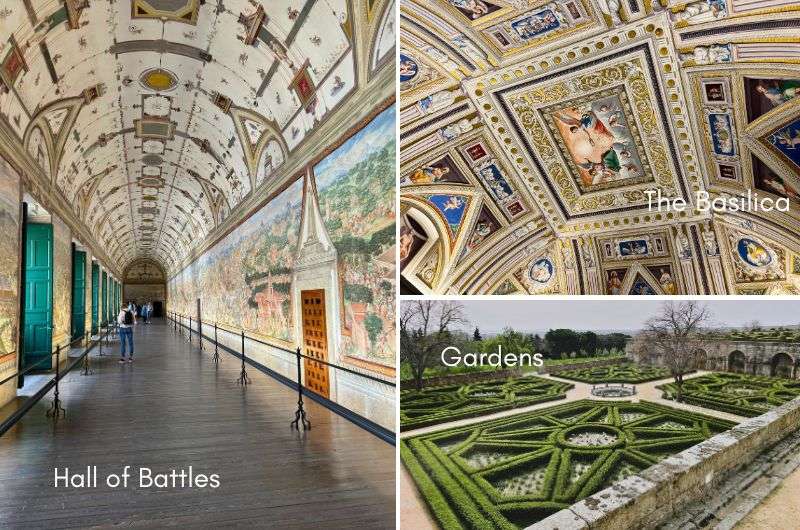
Top things to see in El Escorial
- Library: A total feast for the eyes. The library houses thousands of manuscripts, and the frescoes are just stunning. I found myself spending longer than expected here, just admiring the artistry.
- Gardens: After all that history, unwind in the gardens. They’re nicely maintained and offer great views of the surrounding mountains. You can see them in about 10 minutes, making it a quick but peaceful spot to wrap up your visit. You have to get back to exploring Madrid, so chop chop!
Lunch options in El Escorial
You’re an hour away from more sightseeing in Madrid, but if you’re craving lunch already, there are options right here in San Lorenzo de El Escorial. Restaurante con terraza en El Escorial is a beautiful restaurant where you dine on a terrace (hence the name), but will be best for those driving since it’s a little ways off the main drag. For a place near the train station, check out Restaurante La Rueda, an elegant establishment that serves Spanish cuisine.
Day 2, stop 2: Santiago Bernabéu Stadium (Real Madrid) | Entry fee: EUR 35, Opening hours: Daily 9 am–7:30 pm

Cristiano Ronaldo’s kingdom
- Getting here: The stadium is easy to reach by metro, with its own station—Santiago Bernabéu on Line 10
- Time spent here: 1 hour
- Opening hours: Daily 9 am–7:30 pm
- Price: EUR 35
- Official website: Real Madrid website
If you’re a football fan (that’s soccer to you Americans out there), visiting the Santiago Bernabéu Stadium is a no-brainer. Home to Real Madrid, this stadium is right in the heart of the city (a little to the north of the main tourist action). I was genuinely surprised to find it so centrally located.
If you’re not a football fan, here’s some info on Real Madrid so you can decide if you’re impressed enough with them to visit the stadium or not: Real Madrid remains one of the most iconic football clubs in the world, continuing to dominate both on the field and financially. Not only do they win about a bazillion titles and trophies each year, but the club also frequently trades places with Barcelona as the highest-earning football club globally. In recent years, Real Madrid's annual revenue has soared to over €800 million, solidifying its position at the top. The club has never been relegated from La Liga (Spain’s top football league), maintaining an unbroken streak of top-tier performance. In recognition of its unparalleled success, FIFA has honored Real Madrid as the club of the 20th century, and the club continues to build on that legacy well into the 21st century.

Read more about football (soccer) in Spain in a separate article
Fun fact: The rivalry between Real Madrid and Barcelona, known as "El Clásico," is one of the most intense in sports.
Read more: Football in Spain is fascinating! It isn’t just a sport; it’s a way of life, full of fierce rivalries, unique policies, and passionate fans. For a peek into the heart of Spanish football, from the best teams to the most iconic stadiums, check out my dedicated article: Understanding Spanish Football.
I think I’m more impressed with Real Madrid’s financial status than anything, so when I saw that tours cost EUR 35, I decided a bunch of smelly locker rooms aren’t worth my hard-earned cash. I didn’t know they made their fortune selling tour tickets!! Even the Prado is just EUR 15, sheesh.
Summer 2024 tours
If you want to fangirl and fanboy inside, you’ll be even more stunned to know that in the summer of 2024 (not sure until when), due to construction works, your EUR 35 will NOT include a visit to the locker rooms, the presidential box, the press box, and the trophy room. Instead, you get to see the souvenir shop, how lovely! And also the museum and viewpoint, but that’s about it. You must really like Real Madrid if you decide to go in.
Day 2, Stop 3: Naval Museum | Entry fee: EUR 3, Opening hours: Tuesday to Sunday 10 am–7 pm, closed Mondays

Me, in my element, at the Naval Museum
- Time spent here: 2 hours
- Opening hours: Tuesday to Sunday 10 am–7 pm, closed Mondays
- Price: Officially free but with a EUR 3 recommended donation
- Official website: Madrid Naval Museum website
After soaking up history at El Escorial and optionally stopping by Real Madrid’s home base, it’s time for something with a bit more grit—Spain’s naval history. The Naval Museum, at just EUR 3 per person (the “recommended donation”), it’s an absolute steal considering what you get inside. Come on, it can’t just be me that thinks this place is one of Madrid’s highlights!
What to expect at the Naval Museum
This museum might only take up one floor, but it’s packed with fascinating exhibits that chart Spain’s long and storied relationship with the sea. Spain, after all, was once the superpower of the oceans, with its fleets dominating global exploration, trade, and warfare. The museum does a great job of walking you through this history, from the early naval battles of the 14th century to the height of the Spanish Empire, all the way to more modern times.
Get the audio guide and choose from one of several routes, lasting from 1.5 hours to 2.5 hours.

One of the exhibited warships
Highlights
- Columbus and the New World: Naturally, there’s a significant focus on Christopher Columbus and Spain’s discovery of the Americas. You’ll find detailed exhibits on the voyages that kicked off the age of exploration, including models of the ships that made it all possible. It’s fascinating to see how these relatively small vessels managed to cross the Atlantic and change the world forever.
- The 1500 world map: One of the most interesting pieces in the museum is the map from 1500, which shows the extent of the Spanish Empire at the time. The map really puts into perspective why Spain invested so heavily in its navy—control of the seas meant control of the world. It’s incredible to see how much of the world was already under Spanish control and how that empire grew over the following centuries.
- “The Sun Never Sets on the Spanish Empire”: This famous phrase is brought to life in the museum. It’s a reminder of just how vast and powerful Spain’s empire was, stretching across the globe with territories in the Americas, Asia, and Africa. The exhibits do a great job of illustrating the scope of Spain’s maritime dominance and its impact on world history.
- Wars with England: If you’ve ever wondered why Spain and England have such a storied rivalry, this museum will fill you in. Much of Spain’s naval history is intertwined with its conflicts with England, from the Spanish Armada’s ill-fated attempt to invade England in 1588 to numerous other battles over control of the seas. Yes, I’m obviously obsessed with history, but I think for anyone with half a brain it’s a fascinating look at how these two powers clashed over centuries.
- Well-presented exhibits: What I appreciated most was how well everything is presented. The English descriptions are clear, and there’s even an audio guide if you want to dive deeper into certain exhibits, and you can choose from a route based on duration or theme.

Historical weapons
If you’re into history, especially the kind that involves ships, battles, and global empires, you’ll love this place. Plan to spend at least 2 hours here. For me, this is exactly the kind of museum that hits the sweet spot: it’s informative, well-organized, and doesn’t overwhelm you with endless exhibits and fluff. Plus, it’s a great way to round out your day in Madrid with something uniquely Spanish!
Day 2, Stop 4: El Retiro Park| Entry fee: Free, Opening hours: Daily 6 am–12 am
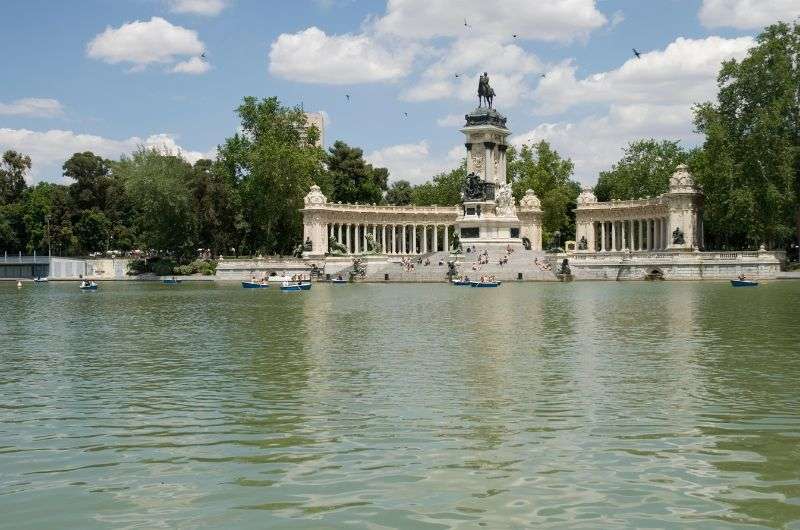
El Retiro Park
- Time spent here: 1–1.5 hours (if you go)
- Opening hours: The park is open daily 6 am–12 am, the Crystal Palace is open daily 10 am–10 pm
- Price: Free for both the park and the palace
Gardens, lakes, statues, a big monument, boats, and a crystal palace in the middle of it all—Retiro Park is like Madrid’s answer to Central Park. In fact, at 350 acres, it’s about a third the size of Central Park, making it a bit more manageable for a leisurely afternoon stroll. It’s just three blocks away from the Naval Museum, so if you’re craving some R&R after two days in Madrid, this might be the place to chill out. I know I didn’t give you much time to rest on this itinerary!
Now, is Retiro Park a must-see? Not really, but it’s a nice option if you’re ready to take a breather.
What to expect at Retiro Park
Retiro Park is huge, free to enter, and packed with people, especially on Sundays. Think Disneyland-level crowds, minus the rides and steep prices. If you’re visiting on a weekend, prepare to share the space with what feels like half of Madrid.
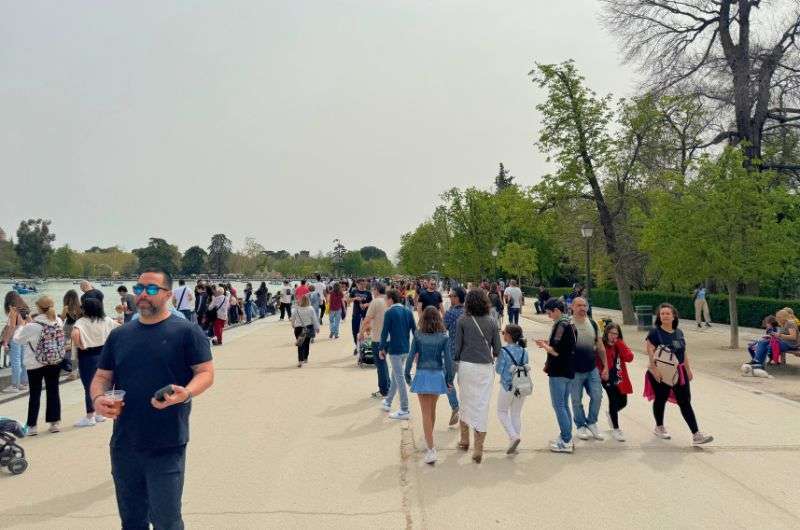
Retiro Park is not exactly the peaceful break from the tourist crowds you might be hoping for
It’s a classic park, with plenty of green spaces, walking paths, and spots to sit down and just relax. There are a bunch of restaurants scattered throughout, so you won’t go hungry, but don’t expect any spectacular views—the park is more about atmosphere than scenery.
Honestly, if you’re short on time or parks aren’t your thing, you can totally skip Retiro. It’s pretty similar to other big city parks, and if you don’t have a specific reason to visit, you’re not missing out on a life-changing experience. But if you’re ready to slow down a bit and just soak up some local life, it’s a pleasant place to do it.
The highlights
- Crystal Palace: One of the park’s main attractions is the Crystal Palace, a glass structure that looks cool from the outside but is pretty “okayish” once you’re up close. It’s worth noting that the Crystal Palace is part of the Reina Sofia Museum and often hosts free art exhibitions. So, if you’re into contemporary art, it’s worth stepping inside. Otherwise, it’s just another pretty building in a park. That said, there’s a black swan living by the pond near the palace—pretty amusing if you’re into investment metaphors.
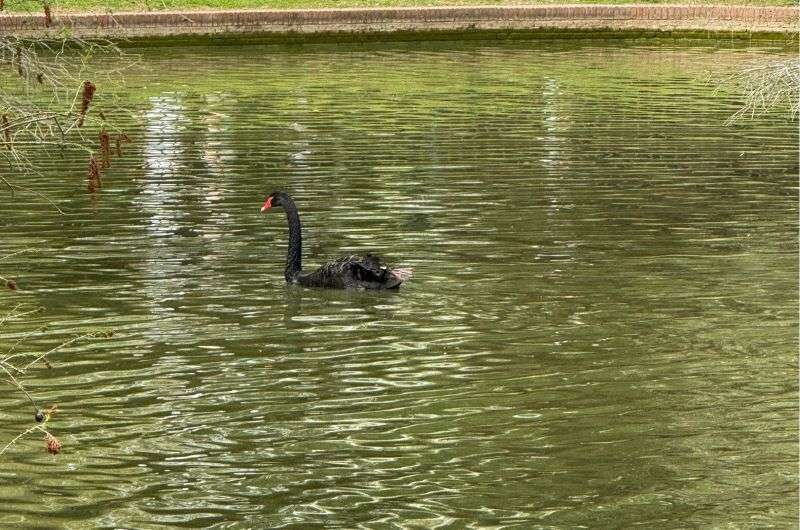
A black swan in Retiro Park
- Rowboats and the monument to Alfonso XII: If you’ve ever wanted to row a boat in the middle of Madrid, this is your chance. The lake in front of the Monument to Alfonso XII is always bustling with people paddling around. The monument itself is grand and makes for a nice backdrop, but again, it’s more about the vibe than anything else.
Dinner on day 2 in Madrid
I don’t think you can visit Spain without trying tapas, so that’s what I’m going to recommend you do this evening. There are plenty of places that would love to serve you the small portions of food that you share, but here are some notable ones:
- Tasca Barea: A small “vibey” bar with vermouth on tap and service that’ll make you feel like you’re part of the gang.
- Vinitus Gran Via Madrid: A trendy interior with great tapas and wine.
That’s it, you’re all done with your 2-day Madrid itinerary. Now what? Well, take a look at the FAQ section and then read up on some of the top day trips from Madrid so you can plan the rest of your trip. They are at least as good as Madrid itself! Or maybe I could interest you in a full 10-day Spain itinerary?
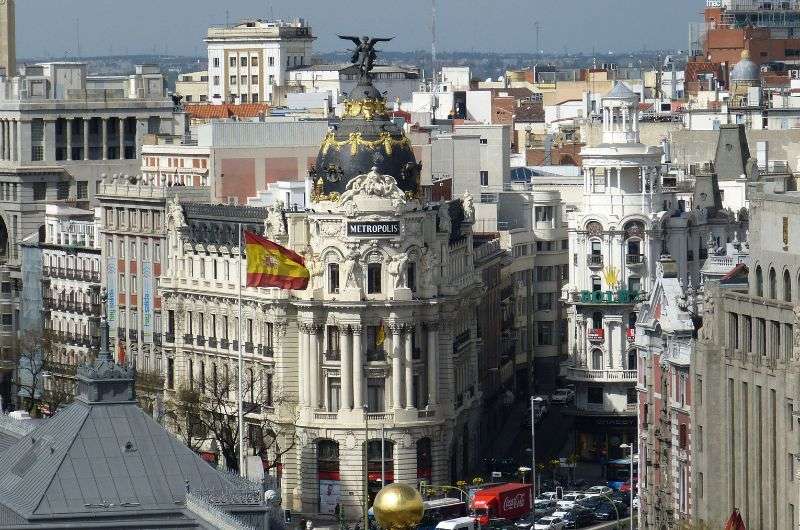
Two days in Madrid are enough
FAQ 2: Which city to combine with Madrid?
Toledo, Ávila, and Segovia are my top picks for day trips from Madrid, and honestly, I think I enjoyed them even more than Madrid itself! Each city has its own unique charm: Toledo with its medieval vibe, Ávila’s impressive city walls, and Segovia’s stunning Roman aqueduct and fairytale castle. All three are easily accessible by train or car and offer a perfect contrast to the hustle and bustle of Madrid. I’ve put together a detailed Madrid day trip guide so you can choose the place that’s the best for you.
FAQ 3: Is Barcelona better than Madrid?
I’m team Barcelona. Barcelona has the beaches, the Gaudí architecture, and a more laid-back vibe—you can’t deny your on the coast. Madrid is great for art and history, but if I had to choose, Barcelona edges it out for me. Then again, if you add the historical town close to Madrid into the mix, it would be a hard choice.

The never ending rivalry
You might also be interested in reading:
- 10-Day Spain Itinerary
- 10 Best Places to See in Mallorca
- 5 days in Barcelona (with day trips)
- How to Visit the Alhambra in Granada
- Andalusia Itinerary: Southern Spain in 10 Days
This post contains affiliate links. I earn a small commission if you make bookings through my links, at no additional cost to you. Thank you for your support!


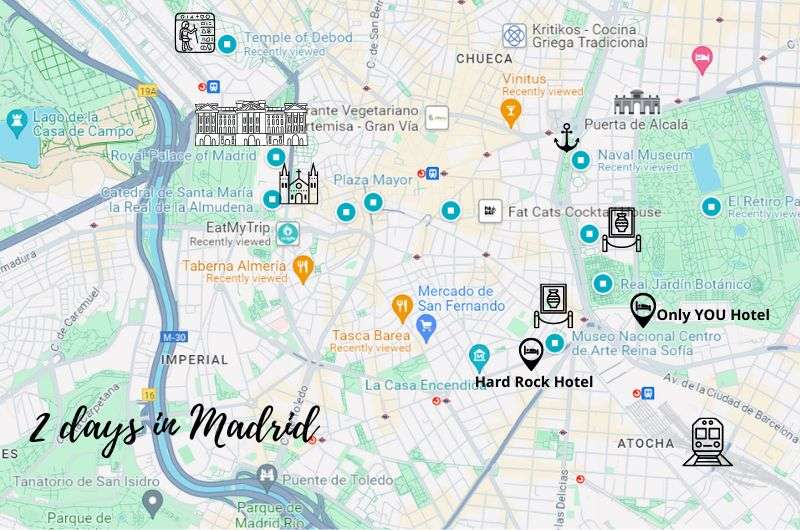
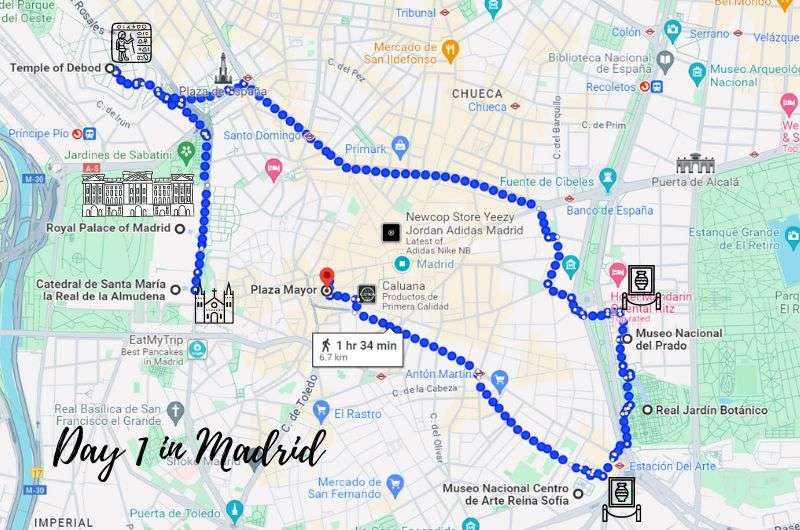
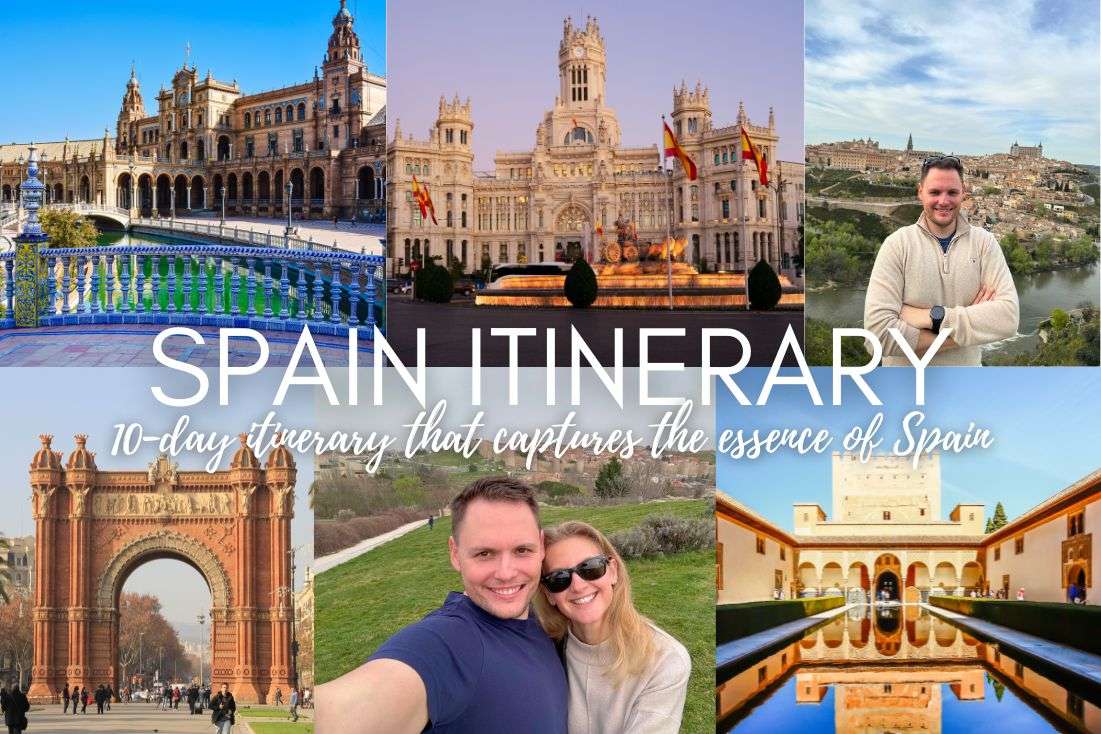
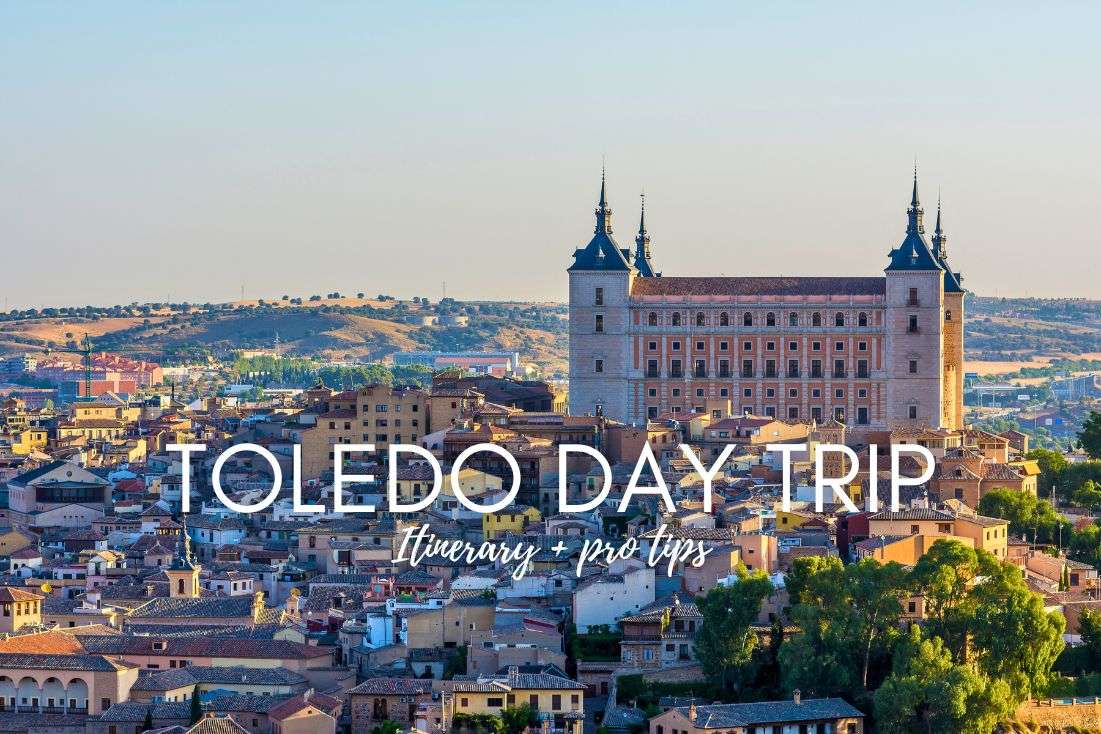
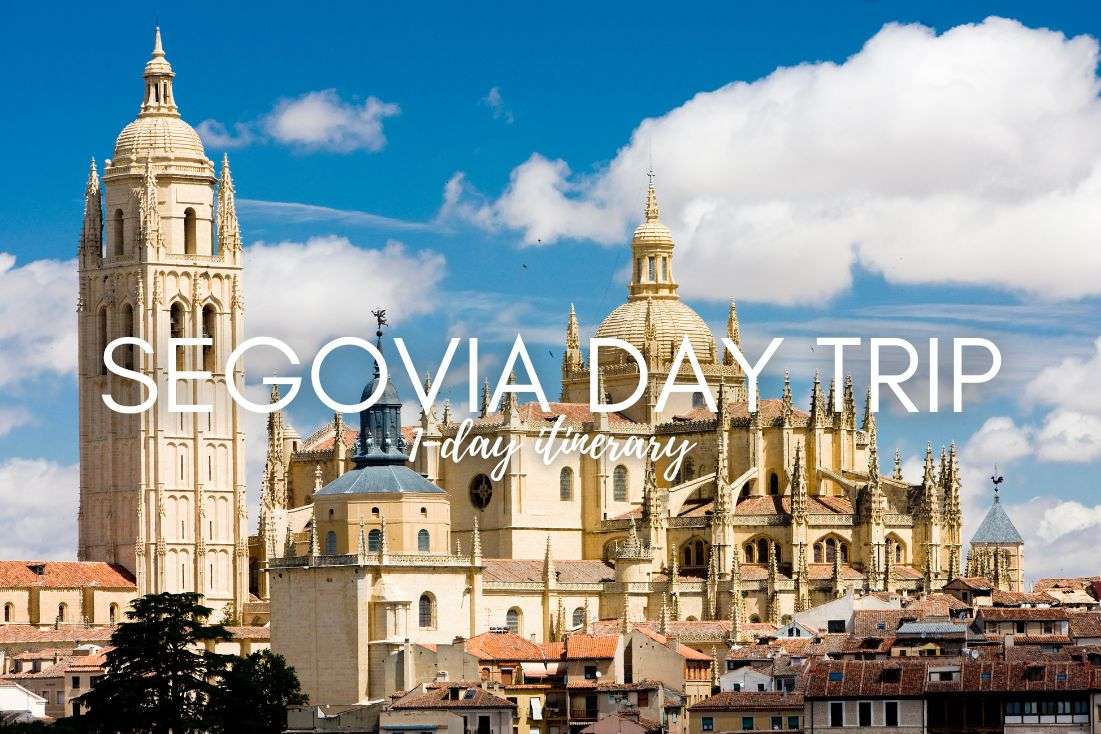





Comments | Thoughts? Give us a shout!